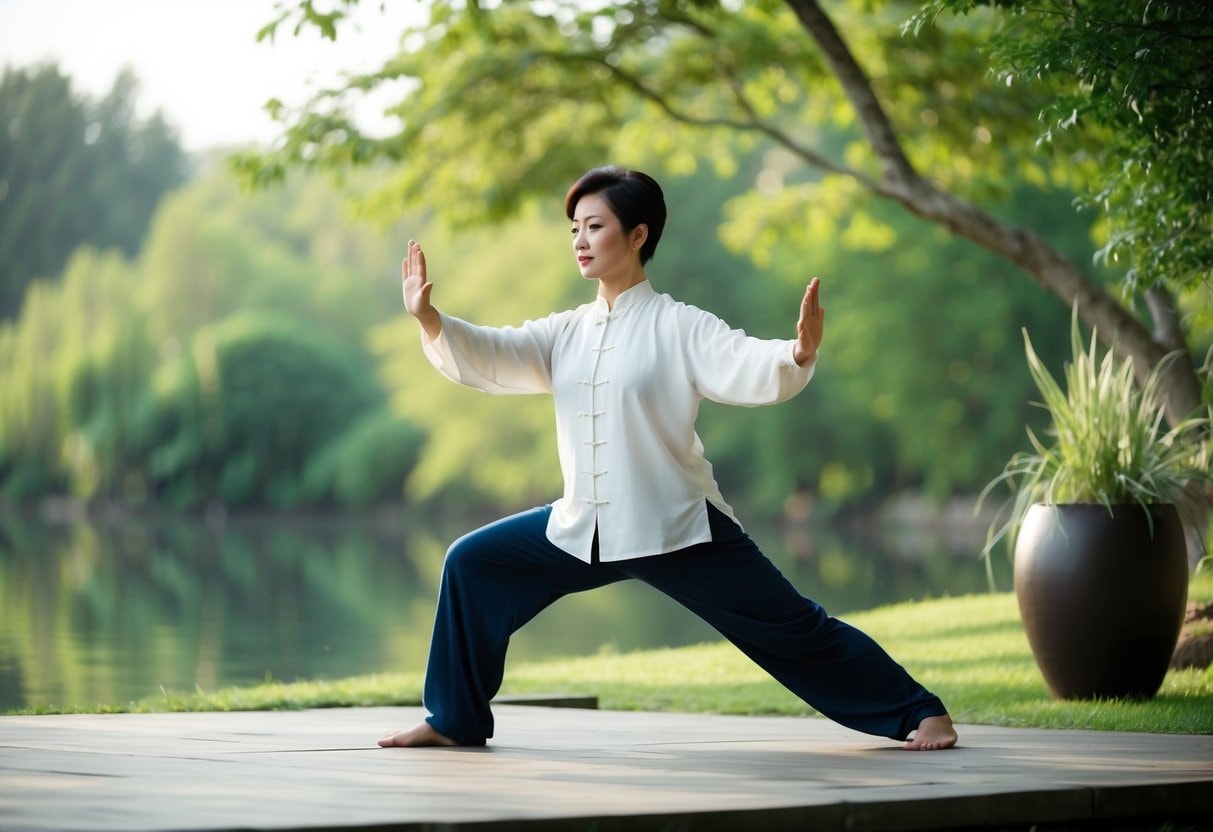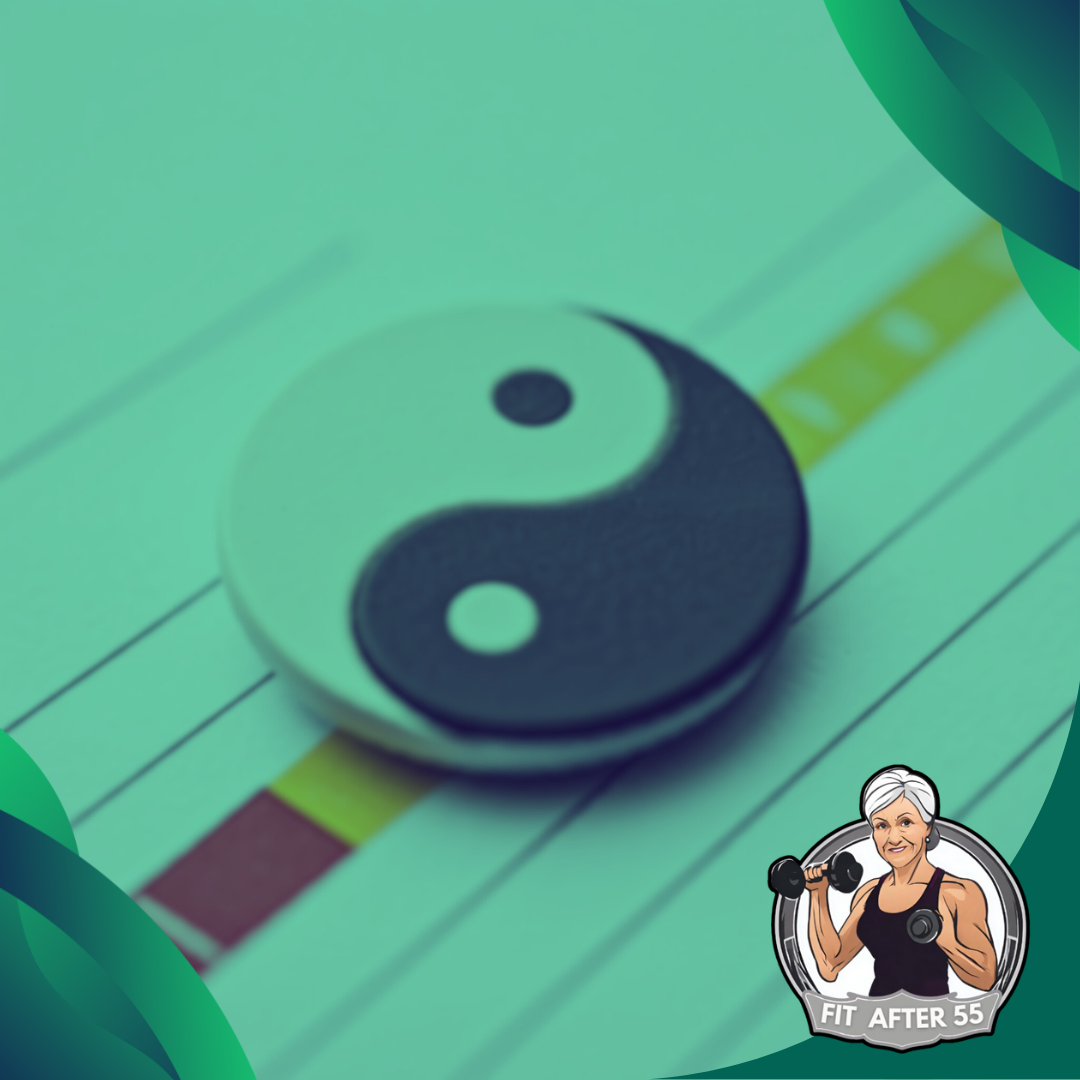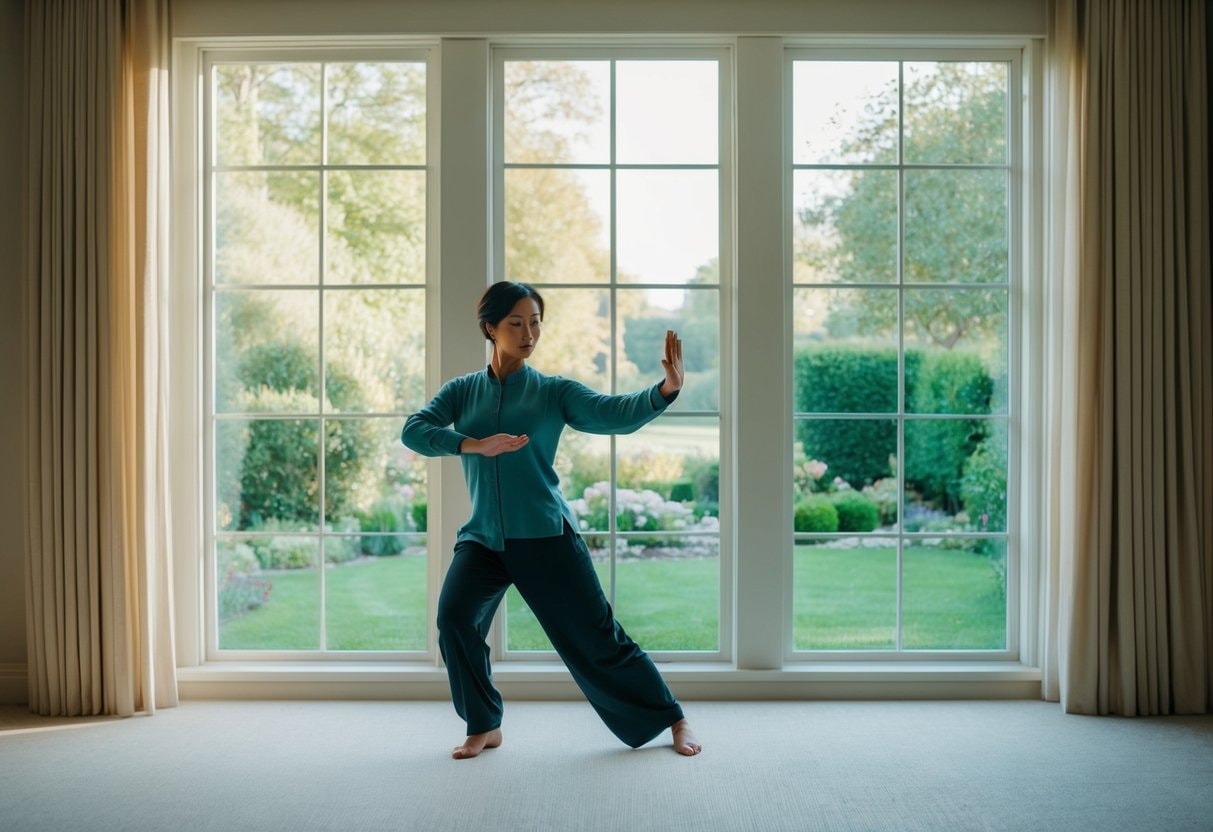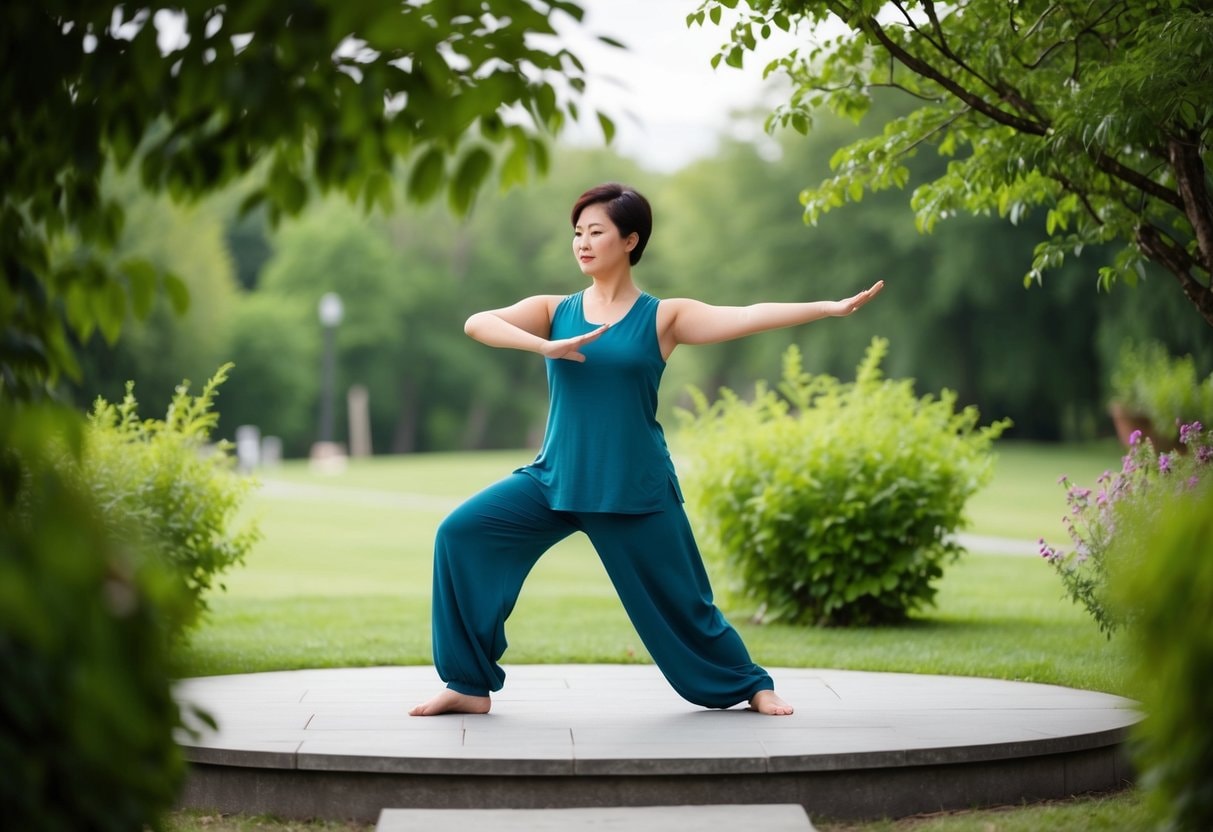Managing diabetes with Tai Chi can feel overwhelming, but what if there was a simple, low-impact way to improve your health without intense workouts or complicated routines? Tai Chi, an ancient Chinese martial art, offers a gentle yet powerful approach to controlling blood sugar levels. By combining slow, graceful movements with deep breathing and meditation, Tai Chi is gaining recognition for its potential to support those living with diabetes.
More than just a calming exercise, Tai Chi has shown promising results in improving insulin sensitivity and lowering blood glucose in people with type 2 diabetes. You don’t need a gym membership or special equipment to get started—Tai Chi can be practiced anywhere, making it an accessible option for anyone looking to take control of their health. Curious about how this mindful practice can help manage diabetes? Let’s explore the benefits and science behind Tai Chi’s impact on blood sugar control.
Tai Chi for Diabetes: Enhancing Health Through Gentle Movement

Tai Chi, a gentle Chinese martial art, is gaining attention as a tool for managing diabetes with Tai Chi. This ancient practice combines slow, flowing movements with deep breathing and meditation. It’s not just for relaxation – Tai Chi might help control blood sugar levels.
Research shows that Tai Chi can improve insulin sensitivity and lower blood glucose in people with type 2 diabetes. A recent overview of studies found that Tai Chi may be useful for adults with this condition. While more research is needed, the early results are promising.
You don’t need special equipment or a gym membership to try Tai Chi. You can practice at home or in a park. It’s a low-impact exercise that’s gentle on your joints, making it a good option if you have other health concerns. Plus, it’s relaxing and might help reduce stress, essential when managing diabetes.
Key Takeaways
- Tai Chi is a low-impact practice that requires no special equipment and can be performed anywhere, making it an easy option for managing diabetes.
- Regular Tai Chi practice may improve insulin sensitivity and lower blood glucose levels, improving overall diabetes management.
- The meditative aspects of Tai Chi help reduce stress, which is crucial for maintaining stable blood sugar levels and enhancing overall well-being.
- In addition to blood sugar control, Tai Chi can improve cardiovascular health, balance, and flexibility, promoting a healthier lifestyle for individuals with diabetes.
- Participating in Tai Chi classes can provide social support and enhance mental health and motivation to manage diabetes effectively.

Understanding Diabetes

Managing diabetes with Tai Chi offers a unique approach to controlling this chronic condition, which affects how your body processes glucose. Diabetes comes in different forms and can lead to serious health issues if not managed properly. Let’s explore the types of diabetes, why managing it matters, and how common it is.
Types of Diabetes
There are mainly two types of diabetes: Type 1 and Type 2.
- Type 1 diabetes is an autoimmune condition. Your body attacks the cells in your pancreas that make insulin. This means you can’t produce insulin on your own.
- Type 2 diabetes is more common. Your body either doesn’t make enough insulin or can’t use it well. This is called insulin resistance.
Both types can lead to high blood sugar or hyperglycemia. This can damage your organs over time. There’s also gestational diabetes, which affects some pregnant women. It usually goes away after giving birth.
Significance of Managing Diabetes
Managing your diabetes is crucial for your health. If left unchecked, high blood sugar can harm your body. It can damage your:
- Eyes
- Kidneys (nephropathy)
- Nerves
- Heart
- Blood vessels
By keeping your blood sugar in check, you can avoid these complications. Good management includes:
- Eating a balanced diet
- Exercising regularly
- Taking medication as prescribed
- Monitoring your blood sugar levels
With proper care, you can live a full, healthy life with diabetes.
Diabetes Prevalence and Health Expenditure
Diabetes is becoming more common worldwide. In 2021, about 537 million adults had diabetes. This number is expected to rise to 783 million by 2045. Type 2 diabetes makes up about 90% of all cases. It’s often linked to lifestyle factors like diet and exercise.
The cost of diabetes care is high. In 2021, global health spending on diabetes was about $966 billion. This includes things like:
- Medication
- Doctor visits
- Hospital stays
- Treatment for complications
By managing your diabetes well, you can help reduce these costs and improve your quality of life.
Check out this video on Understanding Diabetes.
By: Nebraska Medicine Nebraska Medical Center
Basics of Tai Chi
Managing diabetes with Tai Chi is a gentle, flowing exercise that combines movement, breath, and mindfulness. It offers many health benefits and can be practiced by people of all ages and fitness levels.

Historical Background
Tai Chi originated in ancient China as a martial art. It was created by a Taoist monk named Zhang Sanfeng around 700 years ago. Over time, Tai Chi evolved into a health-promoting exercise. The practice spread throughout China and later to other parts of the world.
Today, millions of people practice Tai Chi for its physical and mental health benefits. Different styles of Tai Chi developed over the centuries. The most popular styles are Yang, Chen, Wu, and Sun. Each style has its own unique movements and focus.
Tai Chi as a Mind-Body Exercise
Tai Chi is often called “meditation in motion.” It combines slow, graceful movements with deep breathing and mental focus. This makes it a powerful mind-body exercise. When you practice Tai Chi, you move your body while staying aware of your breathing and thoughts.
This helps you relax and reduce stress. Tai Chi can improve your balance, flexibility, and strength. It also boosts your mood and energy levels. Many people find that Tai Chi helps them feel more calm and centered in their daily lives.
Core Principles of Tai Chi
Tai Chi is based on several key principles:
- Relaxation: You learn to move with less tension in your body.
- Slow, Continuous Movement: Movements flow smoothly from one to the next.
- Upright Posture: You keep your spine straight but not stiff.
- Mindfulness: You stay aware of your body, breath, and surroundings.
These principles help you develop better body awareness and control. They also promote a sense of inner calm and balance. As you practice Tai Chi, you’ll learn to apply these principles to your movements and daily life. This can lead to improved health and well-being over time.
Tai Chi for Diabetes Management

Tai Chi offers several benefits for people with diabetes. This gentle exercise can help control blood sugar, improve heart health, and boost quality of life. Let’s look at how managing diabetes with Tai Chi can be a helpful tool for better health.
Impact on Glycemic Control
Tai Chi can help you manage your blood sugar levels. Studies show that practicing Tai Chi can lower your fasting blood glucose (FBG) and glycated hemoglobin (HbA1c). These are key markers of diabetes control.
Tai Chi’s slow, flowing movements improve insulin sensitivity. This means your body can use insulin more effectively to process sugar. Regular practice can lead to better long-term blood sugar control. Aim for 2-3 sessions per week, each lasting 30-60 minutes.
Benefits for Cardiovascular Health
Tai Chi is great for your heart health, too. It can help lower your blood pressure and improve heart rate variability. The gentle movements get your blood flowing without putting stress on your body. This is especially good if you have type 2 diabetes and are at higher risk for heart problems.
Tai Chi also helps reduce stress. Less stress means better heart health and easier diabetes management. Try to include Tai Chi in your routine alongside other heart-healthy habits like eating well and getting enough sleep.
Improving Quality of Life for Diabetics
Tai Chi can make you feel better overall. Research shows it boosts the quality of life for people with diabetes. You might notice:
- Better sleep
- Less stress and anxiety
- Improved balance and flexibility
- More energy
Tai Chi is a social activity, too. You can join a class and meet others who are also managing diabetes. This support can be really helpful. Remember, Tai Chi is gentle and safe for most people. But it’s always good to check with your doctor before starting any new exercise program.
Scientific Evidence on Tai Chi and Diabetes

Research has shown promising results for managing diabetes with Tai Chi. Studies have looked at how this gentle exercise affects blood sugar, insulin, and other important factors.
Reviewing Clinical Studies
Several studies have examined Tai Chi’s effects on type 2 diabetes. A meta-analysis found that Tai Chi can lower fasting blood glucose compared to no exercise. The more Tai Chi people did, the bigger the improvement in blood sugar. Some key findings from clinical trials:
- Improved blood sugar control
- Reduced insulin resistance
- Better A1C levels
Researchers have also seen benefits for diabetes complications like nerve pain and balance issues. However, more high-quality studies are still needed.
Understanding Research Methodologies
Scientists use different methods to study Tai Chi and diabetes:
- Randomized Controlled Trials (RCTs): The gold standard
- Systematic Reviews: Analyze multiple studies
- Meta-analyses: Combine data from several trials
Quality varies between studies. The best ones use:
- Large sample sizes
- Proper randomization
- Control groups
- Blinding when possible
Researchers also look at how long studies last and what type of Tai Chi is used. This helps determine how reliable the results are.
Evaluating the Efficacy of Tai Chi
To judge how well Tai Chi works for diabetes, scientists look at several factors:
- Size of the effect on blood sugar, insulin, etc.
- How it compares to other treatments
- If benefits last long-term
- Safety and side effects
Some reviews found mixed evidence of Tai Chi’s effectiveness. However, newer studies tend to show more positive results. Key points to consider:
- Works best as part of overall diabetes management
- It may have added benefits like stress reduction
- Low-risk option for many people
More research is still needed to fully understand how Tai Chi can help you manage diabetes. But current evidence suggests it’s a promising addition to your care plan.
Did You Know?
Tai Chi may help reduce the need for medication in some diabetes patients. It can improve blood sugar control and insulin sensitivity, potentially leading to lower medication doses. Patients should always consult their doctor before making any changes to their medication. Tai Chi is most effective as part of a comprehensive diabetes management plan and should not replace medical advice or prescribed treatments.
Practicing Tai Chi at Home
Tai Chi can be a great way to manage diabetes with Tai Chi from the comfort of your own home. It’s easy to start and can fit into your daily routine. Let’s explore how you can begin your Tai Chi practice safely and effectively.
Starting with Tai Chi for Beginners
As a beginner, you can start with simple Tai Chi moves. Try the “Standing Like a Tree” pose. Stand with your feet shoulder-width apart, knees slightly bent. Relax your shoulders and breathe deeply. Hold for 1-2 minutes. Next, try the “Parting the Wild Horse’s Mane” move:
- Start with feet shoulder-width apart
- Shift weight to left foot
- Step out with right foot
- Move arms as if parting curtains
- Repeat on the other side
Watch online videos or use apps to learn basic moves. Practice for 10-15 minutes daily to build strength and balance.
Incorporating Tai Chi into Daily Routine
Make Tai Chi a habit by setting a regular time for practice. Early morning can be great, but choose a time that works for you. Start with 10 minutes and slowly increase to 30 minutes or more. Try these tips to fit Tai Chi into your day:
- Make a few moves while waiting for your coffee to brew
- Practice during TV commercials
- Use your lunch break for a quick session.
Remember, consistency is key. Even a short daily practice can help manage your diabetes.
Safety and Contraindications
Tai Chi is generally safe, but it’s important to take precautions. Always check with your doctor before starting any new exercise routine, especially if you have diabetes complications.
Wear comfortable, loose-fitting clothes and supportive shoes. Practice on a flat, non-slip surface. If you feel dizzy or short of breath, stop and rest. Be careful if you have:
- Severe neuropathy
- Retinopathy
- Uncontrolled high blood pressure
Start slowly and listen to your body. If something hurts, stop. Tai Chi should feel comfortable and relaxing. With regular practice, you may see improvements in your blood sugar control and overall well-being.
Complementary Therapies and Lifestyle Changes

Tai Chi is just one part of managing diabetes with Tai Chi. Other therapies and changes can help, too. Let’s look at some key areas that can make a big difference in your health.
Dietary Considerations for Diabetics
Eating well is crucial for managing your blood sugar. A healthy diet can work alongside Tai Chi to improve your diabetes control. Here are some tips:
- Choose whole grains over refined carbs
- Eat lots of veggies and some fruits.
- Pick lean proteins like fish and chicken.
- Limit sugary foods and drinks.
It’s a good idea to work with a dietitian. They can help you make a meal plan that fits your needs and likes. Remember, small changes can add up to big results over time.
Additional Physical Activities
While Tai Chi is great, mixing in other activities can boost your health even more. Regular exercise helps control blood sugar and weight. Try these options:
- Walking for 30 minutes a day
- Swimming or water aerobics
- Riding a bike
- Strength training with weights or bands
Start slow and build up over time. Always check with your doctor before starting a new exercise program. They can help you find safe and fun ways to get moving.
Stress Reduction Techniques
Stress can mess with your blood sugar levels. Learning to relax can help you manage diabetes better. Here are some methods to try:
- Deep breathing exercises
- Meditation or mindfulness
- Yoga
- Progressive muscle relaxation
These techniques can lower your stress and may help improve your blood sugar control. They’re easy to learn and can be done almost anywhere. Give them a try and see what works best for you.
Check out this video on practicing Tai Chi for better blood sugar control.
By: ThePostGame
The Power of Tai Chi: A Holistic Approach to Diabetes Control
Managing diabetes with Tai Chi presents an accessible and effective approach for individuals seeking to enhance their health. This ancient practice not only promotes relaxation and mindfulness but also contributes to better blood sugar control through improved insulin sensitivity and reduced stress levels. With its gentle, flowing movements, Tai Chi is suitable for people of all ages and fitness levels, making it a viable option for those who may feel intimidated by more intense exercise routines. By incorporating Tai Chi into a comprehensive diabetes management plan, individuals can experience significant improvements in their overall well-being.

Moreover, the benefits of Tai Chi extend beyond blood sugar control. Regular practice can lead to enhanced cardiovascular health, better balance and flexibility, and increased quality of life. As research continues to shed light on the positive effects of Tai Chi, it becomes clear that this gentle exercise can play a crucial role in managing diabetes effectively. Whether practiced at home or in a group setting, Tai Chi offers a holistic approach to health that encourages physical activity, stress reduction, and a deeper connection between mind and body, empowering individuals to take charge of their diabetes management.
Frequently Asked Questions
How Can Practicing Tai Chi Contribute to Diabetes Management?
Tai Chi may help control blood sugar levels. The gentle movements can improve insulin sensitivity. You might find it easier to manage your weight with regular practice. Tai Chi also reduces stress. Lower stress levels can have a positive effect on blood glucose. The mindfulness aspect of Tai Chi may help you make better food choices, too.
What Are the Health Benefits of Tai Chi for People With Type 2 Diabetes?
Tai Chi can improve your BMI. This is important for managing diabetes. It may also boost your energy levels and mood. You might notice better balance and flexibility. This can reduce your risk of falls. Tai Chi may also help lower your blood pressure and cholesterol levels.
Are There Specific Tai Chi Exercises Recommended for Diabetics?
Many Tai Chi moves can benefit people with diabetes. Gentle arm swings and weight shifts are good starting points. Slow walking exercises can improve circulation in your feet. Breathing exercises are also helpful. They can reduce stress and improve oxygen flow. Ask a qualified instructor for moves tailored to your needs.
Is There Scientific Evidence Supporting Tai Chi as an Effective Exercise for Diabetes Care?
Yes, research supports Tai Chi for diabetes care. Studies show it can improve glucose control. It may also boost your immune system function. Tai Chi has been found to reduce inflammation in the body. This is important for managing diabetes complications. More research is ongoing to understand its benefits fully.
How Often Should One Practice Tai Chi for It to Be Beneficial for Diabetes Control?
Aim for at least 2-3 sessions per week. Each session should last about 30-60 minutes. Consistency is key to seeing benefits in your diabetes management. You can start with shorter sessions and build up over time. Even 10-15 minutes daily can be helpful. Listen to your body and increase practice as you feel comfortable.
Redefine Your Fitness Journey After 55!
Hello, fitness enthusiasts! Discover the keys to maintaining energy and wellness with Fit After 55! Whether you’re a seasoned pro or just starting, our platform is your go-to resource for achieving total well-being. From setting realistic goals to celebrating your progress, we’re here to help you redefine thriving beyond 55. Visit our website and follow us on Facebook to unleash your full potential with Fit After 55!

